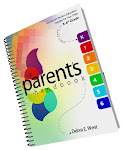Helping Your Child With Math: Part 1
Helping Your Child With Math
Article by: Swankymoms.com
School has begun! Which means your child is probably bringing home art projects, exciting stories about her day at school and... homework! The good news it that most elementary math programs consist of the same basic activities (counting, patterning, sorting, graphing, etc.). By brushing up on these basic areas and learning a few tricks to share with your child, you can help your little one feel confident with these math concepts when she comes home with her number recognition worksheets, counting worksheets, patterning worksheets, sorting and classifying worksheets, or graphing worksheets and help her become a true math-lete.
Counting
Counting is simply knowing the order of numbers. It can include counting forwards by ones (1, 2, 3, etc.), counting backwards (10, 9, 8 …), skip counting (by 2s, 5s and 10s) and counting with ordinal numbers (first, second, third and so on).
Practice counting with your child at random moments throughout the day. For instance, as your child brushes his teeth, count down from 20 to 1. Or count how many steps it takes to get from the door of your house to the car. Count how many stop signs you pass on your way to school. Count, count, count! By counting out loud and then asking your child to join you, you are helping him learn this important skill.
Patterning
A pattern is a sequence that repeats in the same order at least one time. Patterns are all around us - the stripes on our flag or the way the table is set with fork, plate, spoon, fork, plate, spoon. Recognizing patterns helps children make predictions and also understand how their world is organized.
The simplest pattern is called an AB pattern (as the red, white, red, white flag stripes). You can use household items, such as two kinds of beans or socks in two different colors, to demonstrate this AB pattern for your child.
Place the items in front of him, alternating to get the AB pattern. After a few repetitions, point and name the items as you move down the line. Then ask your child which item comes next. ABC patterns are also fun for very young children, such as quarter, dime, penny, quarter, dime, penny, etc.
Create patterns for your child to continue or give him some items (colored blocks, beans, buttons, coins, etc.) and let him create a sequence that repeats. You will be amazed at how creative children can get with patterns!
Tomorrow read about tips on sorting, classifying and graphing.
Tomorrow read about tips on sorting, classifying and graphing.










0 comments:
Post a Comment